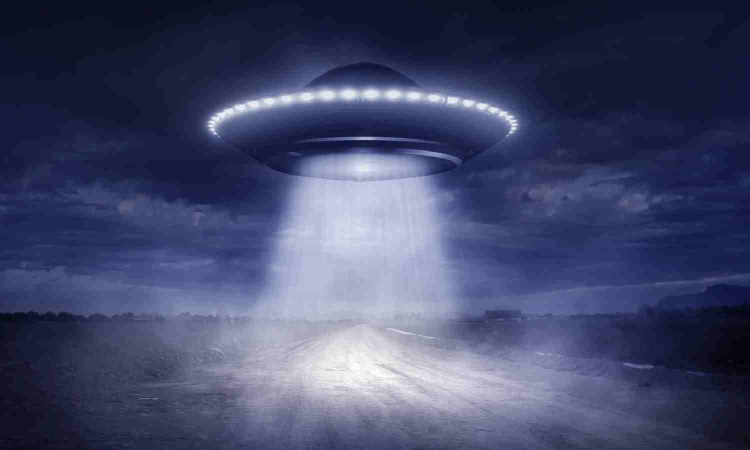Beyond Earth: Did the ‘deep state’ invent UFO craze?
This portrait of “deep state” deception and delusion hardly resolves the UFO question.

Image credit: NBC news
NEW YORK: The last few times I wrote about unidentified flying objects, in the spring and fall of 2023, there had been a series of curious happenings — reveals and leaks and would-be whistleblowing — that convinced me that some group of people inside our government wanted Americans to believe that the national security state had secret knowledge about UFOs.
This was a deliberately circumspect take on an extremely weird situation, which had three notable features. First, the kinds of people coming forward with claims and the footage and accounts of mysterious flying objects being publicised (in The New York Times, among other places) were more serious-seeming, more difficult to eye-roll away, than what we’d seen in prior eras of UFO enthusiasm.
Second, the sudden bipartisan interest from senators and congressmen — not just eccentrics in the House of Representatives but also figures such as Sen. Chuck Schumer, who was then the majority leader, and Sen. Mike Rounds, R-S.D. — was real and substantial, suggesting that a bit more was visible behind the curtain than we knew.
But third, at the same time, all the leaks and insider accounts fell consistently short of what UFO believers call, expectantly, “disclosure” — offering enough to feed speculation about secret government programs, but not nearly enough to overcome a basic sceptical default.
At the time, I argued that all the high-level political and media interest was removing the impediment that many believers argue stands between us and the truth — the alleged fear, among those with secret knowledge, of being jailed or killed if they speak out. If would-be whistleblowers with national security backgrounds such as David Grusch and Luis Elizondo were hale and well (and in Elizondo’s case, publishing a bestselling book), then surely there was no better time to deliver the supposedly world-altering truth.
And if nobody stepped forward — well, you should be more inclined to assume that the truth was never really out there.
Eighteen months later, as you may have noticed, no Lockheed Martin employees have brought forward detailed plans of the alien spacecraft hidden in their corporate vault, and no former heads of the Department of Energy have confessed to keeping a great bureaucratic secret hidden since the dawn of the Atomic Age. Instead we’ve had more interviews and first-person accounts but no actual disclosure from a Trump administration that includes a few UFO-curious figures in its ranks.
And now, in a pair of articles last month by two Wall Street Journal reporters, we’ve been given one of the more comprehensive attempts at a non-extraterrestrial explanation of where some of the weirdness originates. Relying heavily on interviews with Sean Kirkpatrick, who ran the All-domain Anomaly Resolution Office, a Pentagon task force investigating the UFO evidence, the reporters reveal several possible mythology-forging projects inside the military-industrial complex: a combination of deliberate psychological operations aimed at covering up top secret technologies, possible bureaucratic pranks and hazing rituals that accidentally made midlevel personnel into UFO believers, and top secret experiments that the government allowed its personnel to interpret as possible close encounters.
The Journal reporters also follow Kirkpatrick through investigations that did not pan out: A purported piece of extraterrestrial material turned out to have prosaic origins, a claim about Russia reverse-engineering alien technology probably originated in the Russian version of our own UFO disinformation, and a larger pattern emerged where “evidence to support the whistleblowers’ theories appeared to vanish just as Kirkpatrick got close to it.”
What’s useful about the Journal stories is that they’re more capacious than some prior debunking explanations. For instance, certain sceptics pinned the recent wave of UFO-related governmental signalling on true believers who were inserted into the national security loop by Sen. Harry Reid of Nevada (a UFO believer of some sort himself), and who then traded on those credentials to legitimate their theories. But as far as I could tell, this explanation didn’t do justice to the apparent scale of UFO beliefs within the government.
Whereas what the Journal reporters suggest is that UFO belief could have been seeded in multiple different ways over many decades — creating not just a small group of obsessives circulating the same wild theories but also a broader culture in which both deception and misapprehension are at work, the former feeding the latter and the latter encouraging the former, such that parts of the national security state are conditioned to use “aliens” as cover for their secret operations and other parts are conditioned to assume there must be something real there.
This portrait of “deep state” deception and delusion hardly resolves the UFO question. It doesn’t explain the weird aerial encounters that helped touch off the current age of interest — encounters which are, as far as I can tell from public and private information, still taken quite seriously as an unresolved problem by defense and intelligence officials. Nor does it tell us how to understand the phenomenon of personal paranormal encounters, the UFO-as-religious-experience zone where “aliens” seem to play angelic or demonic or faerie-adjacent parts.
@The New York Times



